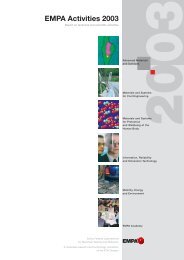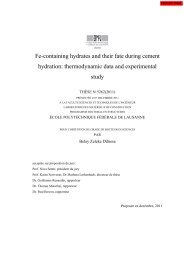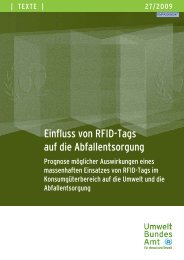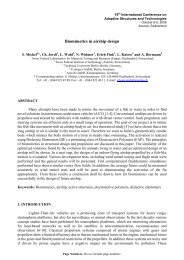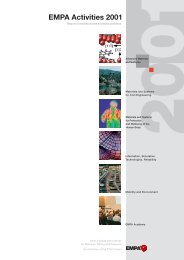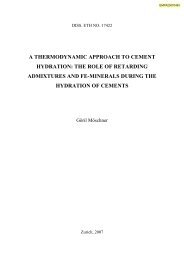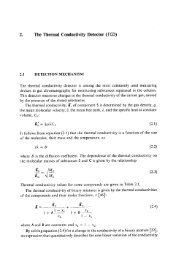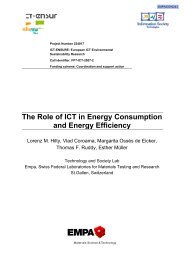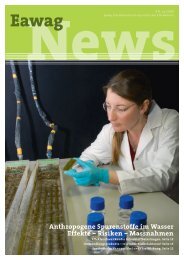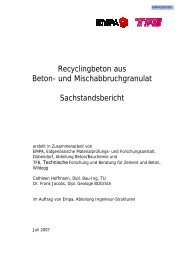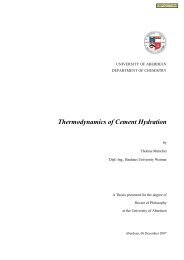Entire volume - Eawag
Entire volume - Eawag
Entire volume - Eawag
Create successful ePaper yourself
Turn your PDF publications into a flip-book with our unique Google optimized e-Paper software.
Therefore neither of these two factors alone<br />
can explain the climate warming. So much<br />
for the level of understanding today, with<br />
which the Danes are in agreement. But how<br />
do the Danes argue further?<br />
Influence of Clouds<br />
The Danish scientists wondered whether<br />
the cosmic radiation could have an effect on<br />
our climate. According to their idea (see<br />
box), the more cosmic radiation that reaches<br />
the earth from space, the greater the<br />
global cloud cover should be. To test this<br />
hypothesis, they examined satellite pictures<br />
of the cloud cover from the years 1980 to<br />
1995, and compared them to the intensity of<br />
the cosmic radiation. They found that the<br />
cloud cover in this period varied by about<br />
2% and followed the variation in cosmic<br />
radiation exactly (Fig. 2). Their hypothesis<br />
appears to be fundamentally able to explain<br />
past observed climate fluctuations. Nevertheless,<br />
the work of the Danes stands on<br />
wobbly legs, since their data analysis is limited<br />
to a tiny time window of only 15 years.<br />
To strengthen their hypothesis, it would be<br />
necessary to obtain further data on cosmic<br />
radiation and climate over the past few<br />
hundred or even thousand years. EAWAG<br />
has found such additional information in the<br />
Greenland ice core.<br />
Weak Cosmic Radiation in the<br />
Past 300 Years<br />
If we look back over the past 300 years, we<br />
see that the cosmic radiation has in general<br />
decreased. On the one hand, we know this<br />
from direct measurements of cosmic radiation<br />
by neutron monitors which have been<br />
operating since the 1950s; on the other<br />
hand, we can use radionuclides such as<br />
beryllium-10 ( 10Be) and chlorine-36 ( 36Cl), which are deposited in Greenland, as indirect<br />
parameters for the reconstruction of<br />
the cosmic radiation in the past. The reduction<br />
in cosmic radiation would seem to be<br />
due to increased solar activity (see Figs. 2<br />
and 3, p. 9). According to the Danish hypothesis,<br />
one would expect for this period,<br />
17 EAWAG news 58<br />
David Parker<br />
Fig 3: Cosmic radiation arrives with high energy from outer space and penetrates the atmosphere, where it collides<br />
with the atoms in the air. This produces secondary particles, which in turn collide with other air atoms, splitting<br />
them into cosmogenic radionuclides. At the same time the primary and secondary particles ionize the air, so that –<br />
according to the Danish hypothesis – more clouds are formed. The above illustration is a montage. It shows at<br />
which height in the atmosphere the various processes occur.<br />
The Cloud Hypothesis<br />
The hypothesis of the Danish scientists Svensmark and Friis-Christensen [1] appears simple<br />
and enlightening: cosmic radiation – high-energy particles from deep space – penetrates the<br />
atmosphere and ionizes the air (Fig. 3). Moisture in the air condenses on these ions to form<br />
small water droplets, resulting in cloud formation. The more clouds that are present, the less<br />
solar radiation reaches the earth’s surface, and temperatures fall. As a corollary to this, it gets<br />
warmer if there are fewer clouds in the sky and the sun’s rays can reach the earth’s surface<br />
unhindered.<br />
How much cosmic radiation can reach the earth’s atmosphere depends on the interplay of two<br />
factors: solar activity and the earth’s magnetic field. The sun is continually spewing out glowing<br />
gas into space. This gas expands to form the so-called solar wind, and in the process carries<br />
with it the sun’s magnetic field. The solar magnetic field forms an external protective shield<br />
around the earth, which prevents the cosmic radiation from entering the earth’s atmosphere<br />
(see Fig. 4 on page 5). In addition, the earth’s magnetic field provides an internal protective<br />
shield, reinforcing the external shield. The more active the sun is and the stronger the magnetic<br />
field, the less cosmic radiation enters the earth’s atmosphere.




